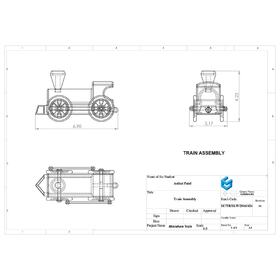
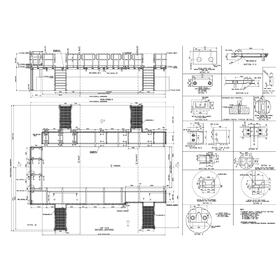
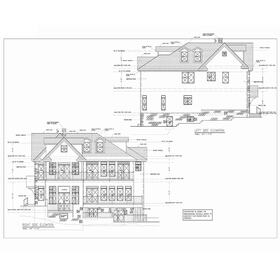
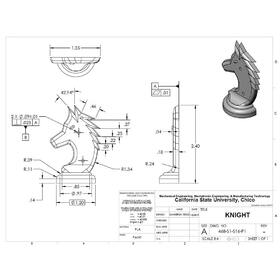
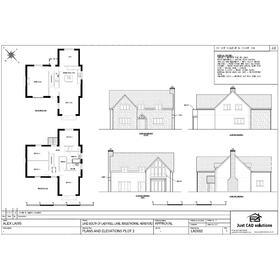
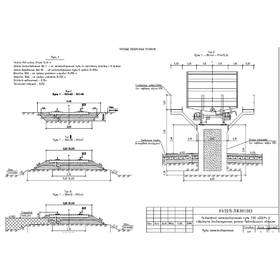
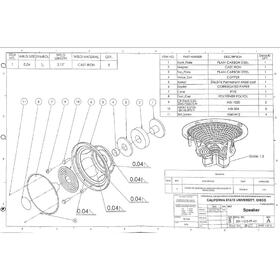







The world of design allows us to visualize the finished product for everything, from cars to large-scale commercial properties. While design is far-reaching, it’s necessary to have uniform expectations for designers and drafters. This act ensures that all designers are operating under the same standards. Often, the standardization of drawings refers to more technical drawings and designs. However, this concept can also directly apply to engineering, architectural, and manufacturing industries.
The standardization of drawings is the establishment of rules that ensure a common understanding of graphic expression. They can define the size of paper used, dimensions, graphical symbols, lines, and overall drawing standards. Typically, these are rules established by the International Standard Organization (ISO). Whether you utilize the ISO standards or create custom rules to suit your clients and designers, it’s crucial to standardize the drawings process.
Standardization of drawings enables you to have uniform rules across departments, teams, and professionals. While these policies are pivotal to the work you and your firm do, it can be challenging to find the time to create standards for your teams. There is also a learning curve associated with following established standards or implementing your own.
The team at Cad Crowd understands the importance of having a uniform approach to design. We also know that you and your team should focus on what is most important: running a successful business. Our standardization of drawing services can connect you with a pre-vetted and expert designer or drafter that can help you implement or develop design or drawing standards at your company.
Whether you need help implementing ISO or The American Institute of Architects (AIA) rules or desire to create your standards for internal business operations, we are here to help you find a designer who can help walk you through the process.
There are a variety of design standards that have already been established. From British Standards set for technical industries to AIA CAD rules used in the United States, it can be hard to know which is suitable for your company.
While it is up to you to decide, there are some fundamentals associated with the standardization of drawings. Here are a few basics and practices to consider when working with a designer or drafter when developing drawing standards:
Paper size – This is more of an ISO design standard; however, it is worth mentioning. ISO 216 standards advise for the utilization of A-series paper types. Sizing can go from 4A0 to A10, with the length and width of each paper size measured in millimeters.
Lines and symbols – When it comes to technical drawings, lines and symbols are significant in guiding designers and drafters uniformly. For example, lines can show if a side is separated, will not be seen in the actual build, or if a plane is cutting through an object. Setting up meanings for each line and symbol used in a drawing allows it to be more easily understood throughout the design process.
Exhibiting dimensions – How will you show the depth of your drawing and reveal a useful perspective of your model? Dimensions should all be drawn in the same way. For example, the exhibiting dimensions may include lightly drawn dimension lines, having all lines drawn with the same measurement, and where dimension lines end.
Establishing scale – Because of the limitation of paper and design sizes, creating a set way to handle scale is necessary. The scale of a drawing is defined by dividing the drawing size by the object size. It is crucial to establish a set measurement for scale so that all designers are producing designs that can be uniformly interpreted. This step also makes communicating design plans to clients and customers more straightforward.
While various steps are involved in standardizing drawings, these are some essential components. Understanding these elements makes it much easier to work with designers who are looking to help with the establishment of uniform standards.
While design involves creativity and flexibility, creating standards for CAD drafters and designers makes the design process more efficient. Fortunately, there is a wide range of benefits to the standardization of drawings. Here are a few that you should keep in mind when selecting the standards for your designers.
Streamline processes – Imagine managing a design project and having drafters draw two different components of a new piece of machinery. Now, think of the inefficiency of these drawings being created with two different scale measurements. This situation would require a re-design which would cause a loss of time and resources. Having uniform standards lets you and your team streamline the design process and ensure cohesive product designs.
Ensure accuracy and precision – Whether designers are showcasing dimensions or drawing the lines associated with new housing development, a lack of uniform standards can cause design mistakes. Rules ensure that designers and drafters use the same metrics to measure lines or exhibit scale. If everyone operates with the same design standards, it will be much easier for drafters to maintain accuracy and precision in their designs.
Develop product quality – Often, the standardization of drawings or designs is one of the first steps in the quality control process. Because everyone is operating with the same rules, it is much easier for designers to create well-designed components for machinery or development projects. This act ensures that contractors and builders use the best raw materials and building practices for products once they move past the design phase.
Bring ease to the modification process – If designs adhere to uniform standards, modifying plans is easier and more straightforward. Often, rules can include directions for accurate modifications and alterations. A streamlined way of handling design changes can speed up the process and ensure that adjustments are valid and effective.
Standardize your processes – Design standardization can trickle down to actual operations. Having a set of design rules can also establish set parameters for material sizes, the number of supplies needed, and the time required to create these items. This process allows your designers and product-building team to connect. Involving other internal stakeholders in the process is much easier.
Better serve customers – Nothing contributes to a poor customer service experience more than inefficiency and a lack of clarity. Standardization of drawings enables your team to meet customer requirements quickly. Design uniformity also eliminates the tendency for mistakes and errors, slowing down the process.
There are a variety of benefits to investing in the standardization of drawings. Not only does it allow you to serve your customers better, but it also helps you to make life easier for your design teams. Standards and rules allow for the facilitation of the creativity and innovation that comes with design work.
Developing standards for your drawings and designs is essential for your firm or company. However, this can feel like a daunting task to accomplish. It helps to have a strategy and priorities for what you want to address. Outsourcing this task and having a designer come in to develop these standards can change your processes for the better. Here are some steps to use when working with a designer to establish company-wide design standards.
Look at your problem areas – If you have been in business for several months, problem areas will become more evident. As a result, you can start to see issues that result from a lack of standardization. For example, are drawings leading to a lack of cohesiveness or organization? Are you failing to order suitable raw materials? Your drawings will have an impact on this. So, observe your drawing processes for insight into where you can improve.
What does your organization need? – After you get a sense of the problem areas, you can then understand where your most urgent needs are. Maybe you need a much shorter and more flexible design process to address customer needs or modifications. On the other hand, you may need to hire more drafters to handle drawing needs. Knowing your needs helps you to begin to see what standards are necessary to put in place to increase output and weed out inefficiencies.
ISO, BS, AEC, or AIA: Decide what works for you – Every design and drawing standard is a variation of similar rules. Their ultimate goal is to ensure that designs are easy to comprehend and understand while bringing more simplicity to the design process. Each design standard has its own concepts and approaches to design and drafting. It is up to you to decide which best works for you and your company while infusing standards that work for your team.
Understand how your firm or company operates – There may be some nuances to how you do business that either enhance or deter the use of standardization of drawings. For example, if you promise your consumers that you will produce modifications within a set period, you need to ensure your design standards allow for this. Ultimately, accuracy and precision are crucial to what you do, and standardization of drawings will ensure these concepts remain front and center.
Hire the right designer or consultant to help – Again, you and your team should focus on your business and managing client relationships. It can be challenging to select or create design standards. So, the next step is to hire a designer or drafter that can help develop company-wide standards for drawing and designs. This individual should be someone who has established rules for another company, has extensive experience as a designer or drafter, and is willing to understand how you do things.
While this is not an exhaustive list of steps to begin setting drawing standards for your company, it is a way to get started. The goal of drawing process standardization should be creating a more streamlined and efficient drafting system. Your customers want accurate, easy-to-comprehend, and precise designs that give them the tools they need to make decisions. This process will enable you to make this happen for your customers and clients.
Standardization of drawings is essential to your customers' exceptional designs and drawings. However, to realize the benefits of this step, you need to work with a designer or drafter with experience in developing standards.
This step is where Cad Crowd can help. Our global network of designers is vetted, talented, and committed to providing exceptional customer service throughout each phase of the design and drawing process. Our team brings a customized approach to each client we work with. We strive to understand the nuances of what you do, so we can create a personalized strategy to help. In addition to customization, we strive to be flexible in addressing the needs of our clients.
From understanding your design processes to drafting rules that benefit your design teams and your customers, our designers are equipped to simplify the standardization of the drawings process. Even if you have already selected a design framework that works for you and your company, our designers are ready to take the complexity out of the standardization of the drawings process.
We are excited to help you set drawing standards for your company, and we invite you to reach out to us today for a free quote.
At Cad Crowd, we have some of the best CAD design service freelancers in the world. Regardless of the type of project you have, contact us today for a free quote.


